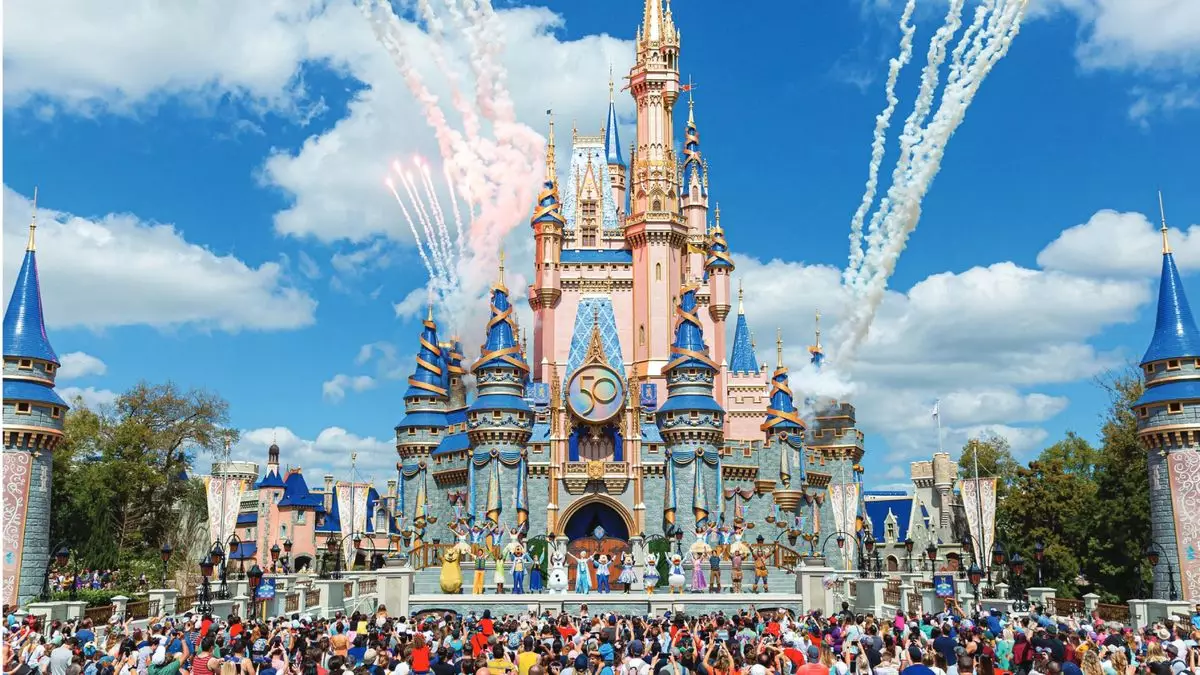Disney isn’t just a purveyor of enchantment and nostalgia; it’s a powerhouse that significantly shapes the U.S. economy. A study commissioned by Disney and conducted by Tourism Economics reveals that the company’s two major domestic resorts—Disney World in Florida and Disneyland in California—collectively contribute an astounding $67 billion to the national economy. This staggering figure emphasizes that Disney is far more than just an entertainment company; it’s a vital economic engine, spearheading growth and job creation across the country.
This analysis marks a pivotal moment as Disney undertakes the unprecedented step of quantifying its nationwide economic footprint. Traditionally, reports have isolated regional impacts, but now, we see how Disney resonates through both local and national economies. Michael Mariano, head of economic development at Tourism Economics, articulated this broad scope during a virtual media briefing, emphasizing that the parks are integral to regional economies, which in turn feed into national economic vitality.
The Intricate Fabric of Economic Impact
Delving into the methodology of the study reveals a meticulous approach. Economists segmented Disney’s economic impact into three clear categories: direct, indirect, and induced impacts. Direct impacts capture all economic transactions made by visitors within and around the parks. From ticket sales to food purchases, the influence of thousands of guests translates into a profound boost for nearby businesses, including hotels, restaurants, and transportation services.
On the other hand, the indirect impacts cover the benefits derived from Disney’s procurement of goods and services from local suppliers—think merchandise, food supplies, and maintenance services that keep the parks running smoothly. Induced impacts encompass the spending habits of Disney employees, whose wages circulate throughout the community. This systematic unpacking of economic influence demonstrates the layered effects of Disney’s presence in its respective locales.
The figures are compelling. In Southern California alone, Disneyland generates a remarkable economic impact of $16.1 billion for fiscal year 2024, a number that would make it a major player in any industry sector. To illustrate the significance of this impact, Mariano compared it to consumer spending on pizza delivery, emphasizing the tangible value generated.
A Deep Dive into Job Creation
The job market is another critical area where Disney’s footprint is felt profoundly. Disneyland directly and indirectly supports over 102,000 jobs in Southern California. In Orange County, Disney stands as the largest employer, providing roughly 36,000 jobs within its sprawling entertainment complex. Amid the uncertainties of the contemporary labor market, such employment figures are nothing short of miraculous.
Meanwhile, in Florida, Disney World boasts an astounding economic impact of $40.3 billion and supports approximately 263,000 jobs. The interconnectedness of these regional economies with the larger national economy cannot be overemphasized: Disney resorts also generate an impressive $10.2 billion worth of additional economic activity beyond their immediate areas through supplier and vendor interactions.
The Broader Economic Implications
Combining regional impacts with broader nationwide contributions ultimately leads to that eye-catching $67 billion figure. Mariano cleverly contextualizes this with consumer spending: it is nearly equivalent to what Americans collectively spent on major holidays like Valentine’s Day, Mother’s Day, and Halloween in 2024. This juxtaposition not only illustrates the extraordinary influence Disney wields but also frames the company as an integral part of American culture and economics.
Disney’s resorts aren’t just places for entertainment; they have cultivated a robust ecosystem that amplifies job creation and stimulates local economies. The ripple effect of Disney’s attractions extends beyond park gates, weaving a complex tapestry of economic interdependence that ties communities together.
This newfound understanding of Disney’s economic significance is essential for stakeholders—including policymakers, investors, and community leaders—who must acknowledge the crucial role that the company plays in shaping not only regional economies but also the broader economic landscape of the United States.


Leave a Reply